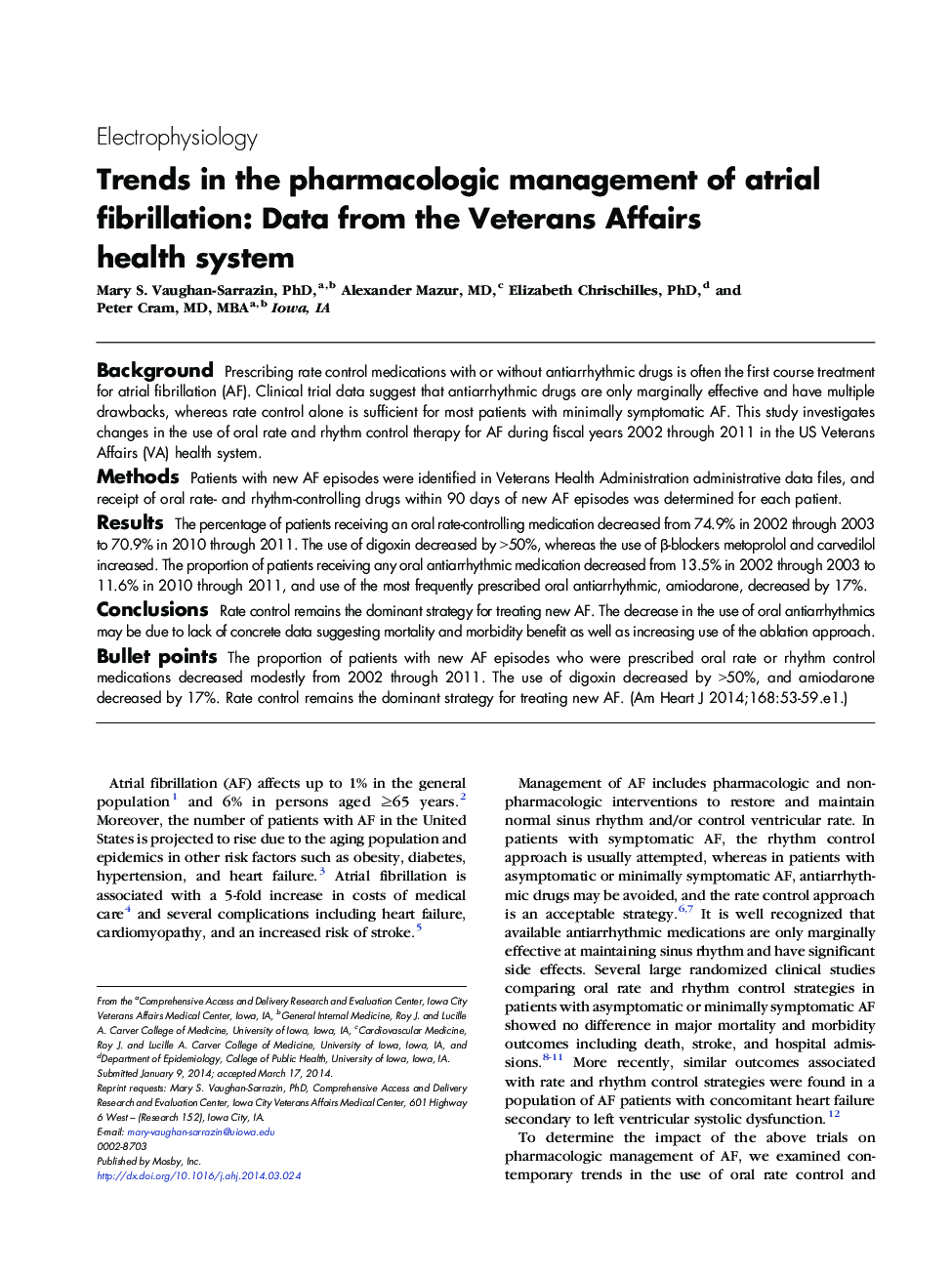| Article ID | Journal | Published Year | Pages | File Type |
|---|---|---|---|---|
| 5927787 | American Heart Journal | 2014 | 8 Pages |
BackgroundPrescribing rate control medications with or without antiarrhythmic drugs is often the first course treatment for atrial fibrillation (AF). Clinical trial data suggest that antiarrhythmic drugs are only marginally effective and have multiple drawbacks, whereas rate control alone is sufficient for most patients with minimally symptomatic AF. This study investigates changes in the use of oral rate and rhythm control therapy for AF during fiscal years 2002 through 2011 in the US Veterans Affairs (VA) health system.MethodsPatients with new AF episodes were identified in Veterans Health Administration administrative data files, and receipt of oral rate- and rhythm-controlling drugs within 90 days of new AF episodes was determined for each patient.ResultsThe percentage of patients receiving an oral rate-controlling medication decreased from 74.9% in 2002 through 2003 to 70.9% in 2010 through 2011. The use of digoxin decreased by >50%, whereas the use of β-blockers metoprolol and carvedilol increased. The proportion of patients receiving any oral antiarrhythmic medication decreased from 13.5% in 2002 through 2003 to 11.6% in 2010 through 2011, and use of the most frequently prescribed oral antiarrhythmic, amiodarone, decreased by 17%.ConclusionsRate control remains the dominant strategy for treating new AF. The decrease in the use of oral antiarrhythmics may be due to lack of concrete data suggesting mortality and morbidity benefit as well as increasing use of the ablation approach.Bullet pointsThe proportion of patients with new AF episodes who were prescribed oral rate or rhythm control medications decreased modestly from 2002 through 2011. The use of digoxin decreased by >50%, and amiodarone decreased by 17%. Rate control remains the dominant strategy for treating new AF.
